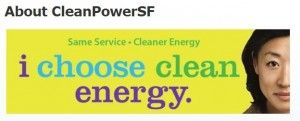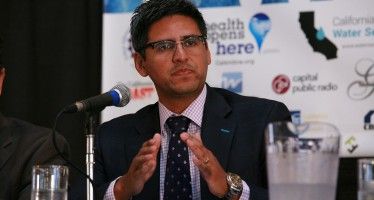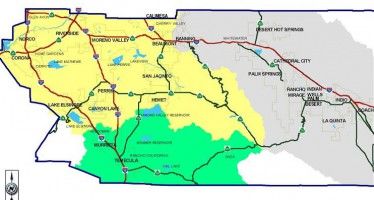San Francisco botches energy co-op rollout
 Obamacare isn’t the only new government program suffering problems. San Francisco is getting jolted by its new Community Choice Aggregation program, which the U.S. Department of Energy defines in general as, “a state policy that enables local governments to aggregate electricity demand within their jurisdictions in order to procure alternative energy supplies while maintaining the existing electricity provider for transmission and distribution services.”
Obamacare isn’t the only new government program suffering problems. San Francisco is getting jolted by its new Community Choice Aggregation program, which the U.S. Department of Energy defines in general as, “a state policy that enables local governments to aggregate electricity demand within their jurisdictions in order to procure alternative energy supplies while maintaining the existing electricity provider for transmission and distribution services.”
CCAs allows cities or counties to opt out of electric service from their local monopoly utility and form a cooperative to buy cheap green power in the market. In California, the monopolies are Pacific Gas & Electric, Southern California Edison and San Diego Gas & Electric. (California also has municipal utilities, such as the Los Angeles Department of Water and Power. But they are not involved in these CCAs because the government-run utility itself is the monopoly.)
Under a CCA, the community controls the price, the fuel mix and the source of energy, while the existing electric utility merely delivers electricity and services accounts. CCAs can also get into the power-generating business themselves.
However, the rollout of a CCA in the City and County of San Francisco has been badly mishandled. Thanks to Allysia Finley of the Wall Street Journal in her “Fifty Shades of Green in San Francisco,” the situation can be better understood.
SF finds out green power costs 5 times as much
The California Legislature passed Assembly Bill 117 in 2002 after the state energy crisis of 2001. It allowed local communities to form cooperatives to buy cheap power.
In 2007, San Francisco County’s Board of Supervisors authorized CleanPowerSF as a “community choice aggregator” to provide a cleaner, cheaper price alternative to PG&E electric rates that are set by the California Public Utilities Commission. Like Obamacare, CleanPowerSF spent three years in planning, only to result in a botched rollout, which began for CleanPowerSF in 2010.
In 2010, the City of San Francisco solicited bids for renewable energy for 90,000 residents. Ratepayers would be automatically enrolled in the system unless they requested to be allowed to opt out and continue with PG&E. The problem: Only one provider, Shell Energy, submitted a bid, which was approved by the City. In turn, the City delegated the crucial task of setting caps on electricity rates to San Francisco’s Public Utilities Commission, whose members are appointed by the mayor.
However, Shell’s green power from sources inside California would cost more than five times PG&E’s power rates. Typical San Francisco electric bills would climb from about $73 per month to $300 per month, according to Finley.
Renewable Energy Certificates
So San Francisco and Shell came up with another green scheme to replace the one that failed. The scheme involve what are called Renewable Energy Certificates. REC’s allow an energy provider to sell “dirty” power, provided the provider bought offsetting pollution permits from wind farms and re-forestation projects.
Environmental groups charged that this was nothing but “green washing” electricity generated from dirty fossil fuel. The dirty power would still come through natural gas pipelines from Shell’s facilities in Texas. This brought about union opposition into the picture.
All of CleanPowerSF’s power must come from in-state sources, asserted the San Francisco Labor Council and the International Brotherhood of Electrical Workers. The City PUC found out that cheap power is non-union imported power. The unions claimed that RECs would out-source their jobs.
Shell devised a possible solution. It would buy or generate clean hydropower from sources inside the state. But California’s tough Green Law, Assembly Bill 32, the Global Warming Solutions Act of 2006, specifically forbade hydropower being considered as green power, even though it emitted no pollution.
San Francisco requested that the PUC merely cap electric rates so the city could finalize its agreement with Shell. The PUC short-circuited the city’s request by refusing to cap the rates.
Green Power is “Dirty”
Where this game of King of the Hill has ended up is that the San Francisco County Board of Supervisors is now trying to end-run San Francisco’s PUC and mayor, Edwin M. Lee, by proposing the city join Marin County’s CCA, the first in the state.
Under Marin’s CCA program, ratepayer’s have a choice of two plans: 1) 100 percent green power; 2) 50 percent green power mixed with power from wind and burning landfill gas and wood. Finley points out the paradox that biomass- and wood-powered electricity would produce more C02 emissions than so-called “dirty” coal-fired and natural gas-fired power.
The preference of going with a CCA rather than a conventional electric utility is being made as a cultural choice, not a rational economic or environmental decision.
This is seen in the Marin County CCA’s Mission Statement: “The purpose of the Marin Energy Authority is to address climate change by reducing energy related greenhouse gas emissions and securing energy supply, price stability, energy efficiencies and local economic and workforce benefits. It is the intent of MEA to promote the development and use of a wide range of renewable energy sources and energy efficiency programs, including but not limited to solar and wind energy production at competitive rates for customers.”
Berkeley and San Diego also are planning CCA’s. Citizens in these cities need to closely examine what has been going on with CCAs in both San Francisco and Marin County.
Related Articles
With old warnings unheeded, Oroville Dam problems threaten valley
SACRAMENTO – A Sacramento Bee story published Monday succinctly described the disaster unfolding at the nation’s tallest dam, where
How much taxpayers lose in special elections
Henry T. Perea’s decision to vacate his Assembly seat early cost Fresno County a half-million dollars — enough to pay
Sen. Boxer: Conservation would solve drought
Can California’s zero-sum water wars only be resolved by a system of stern water conservation? That’s what California U.S.




